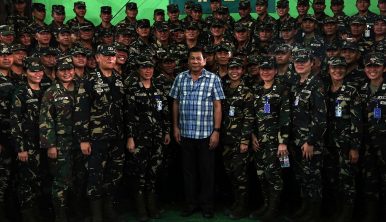A closer look at the significance of a new development.

Image Credit: Wikimedia Commons/Presidential Communications Office
On Sunday, the Philippines’ military chief announced that the country had officially moved forward with unifying the special operations units of its major services under a consolidated command. The disclosure of the move, which had been mulled, illustrates ongoing efforts by the Southeast Asian state to change how it operates in the wake of new and growing security challenges.
As I have been noting in these pages, a series of security challenges that the Armed Forces of the Philippines (AFP) has been facing over the past few years, including the Zamboanga City attack back in 2013 and the siege of the southern city of Marawi in 2017, has led to some rethinking within the military about how it operates (See: “Battle for Marawi Exposes Philippine Military’s Intelligence Crisis”). One aspect of that has been how the AFP organizes itself for kinds of security operations it is involved in.
Over the weekend, in a sign that at least some of this thinking is translating into action, local media outlets reported that AFP Chief of Staff General Rey Leonardo Guerrero announced the activation of a new AFP Special Operations Command (AFPSOCOM). AFPSOCOM, which came into effect on April 6, will function as an integrated command of special operations unit from all major services that will he headquartered at Fort Magsaysay in Nueva Ecija province.
The idea of such an integrated combatant command itself is far from new. As an example, the United States, with which the Philippines maintains a formal military alliance, officially activated its own U.S. Special Operations Command (SOCOM) as a unified combatant command back in 1987. That came after a series of events, including the failed rescue of American hostages at the U.S. Embassy in Iran in 1980, led to some rethinking on that front.
Practically, the formation of AFPSOCOM simply means that it would take command and supervision of the now deactivated SOCOM under the Philippine Army, along with Special Operations Wing of the Air Force; the Naval Special Operations Group; Scout Ranger Regiment, Special Forces Regiment and Light Reaction Regiment of the Army; and the Joint Special Operations Group of the General Headquarters. Major General Ronnie Evangelista, the former commander of the Army’s SOCOM since January, has been moved on now to be the head of AFPSOCOM.
The establishment of AFPSOCOM is not an insignificant development. Having an integrated command structure can help foster interoperability between different units that could help boost their ability to confront security challenges, particularly in joint operations involving special forces. Indeed, Guerrero himself cited his own experience in the Eastern Mindanao Command as being a factor in seeing a personal need for a joint SOCOM. Indications are that defense officials envision AFPSOCOM as fostering exactly this kind of interoperability through a series of endeavors including training and exercises.
Yet Guerrero was probably going a bit too far when he said that he expected “that all of the gaps and challenges” encountered in joint operations involving special forces to be addressed by the activation of AFPSOCOM. The gaps and challenges that the Philippines military faces are significant, and they involve not only the way it is organized, but everything from how it is resourced to the procedures it has in place to the cultures among the the different services. Though we have yet to see much in the way of publicly released specifics, an integrated command is no silver bullet for addressing these manifold concerns.
Nonetheless, AFPSOCOM is a move in the right direction in addressing one piece of the challenge the Philippines faces. That is a good start, as well as an encouraging sign that the Philippines is slowly moving forward on operationalizing some of the measures mulled following changes in the regional security environment.

No comments:
Post a Comment
Note: Only a member of this blog may post a comment.